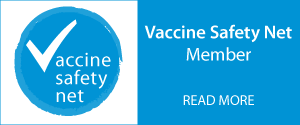This report introduces a Brighton Collaboration (BC) case definition for autoimmune hepatitis (AIH), which has been classified as a priority adverse event of special interest (AESI), as there were possible cases seen following COVID-19 vaccination. The case definition was developed by a group of subject matter and BC process experts to facilitate safety data comparability across pre- and post-licensure clinical trials, as well as pharmacovigilance activities in multiple settings with diverse resources and healthcare access. The usual BC case definition development process was followed in an expedited manner, and took two months to complete, including finalizing the manuscript for publication, instead of the usual 1 year development time.
It includes a systematic review of the literature and an expert consensus to define levels of diagnostic certainty for AIH, and provides specific guidelines for data collection and analysis. Histology, serological and biochemical tests and exclusion of alternate diagnosis were considered necessary to define the levels of certainty (definitive, probable and possible). AEFI reports of suspected AIH were independently classified by the WG members to test its useability and these classifications were used to finalise the case definition. The document underwent peer review by external AIH experts and a Reference Group of vaccine safety stakeholders in high-, low- and middle-income countries to ensure case definition useability, applicability, and scientific integrity. The expedited process can be replicated for development of other standardised case definitions for priority AESIs for endemics and epidemics. While applicable to cases reported following immunisation, the case definition is independent of lapsed time following vaccination and, as such, can also be used to determine background incidence for vaccinated and unvaccinated control groups in studies of causal association. While use of this case definition is also appropriate for the study of safety of other products including drugs, it is not meant to guide clinical case management.



